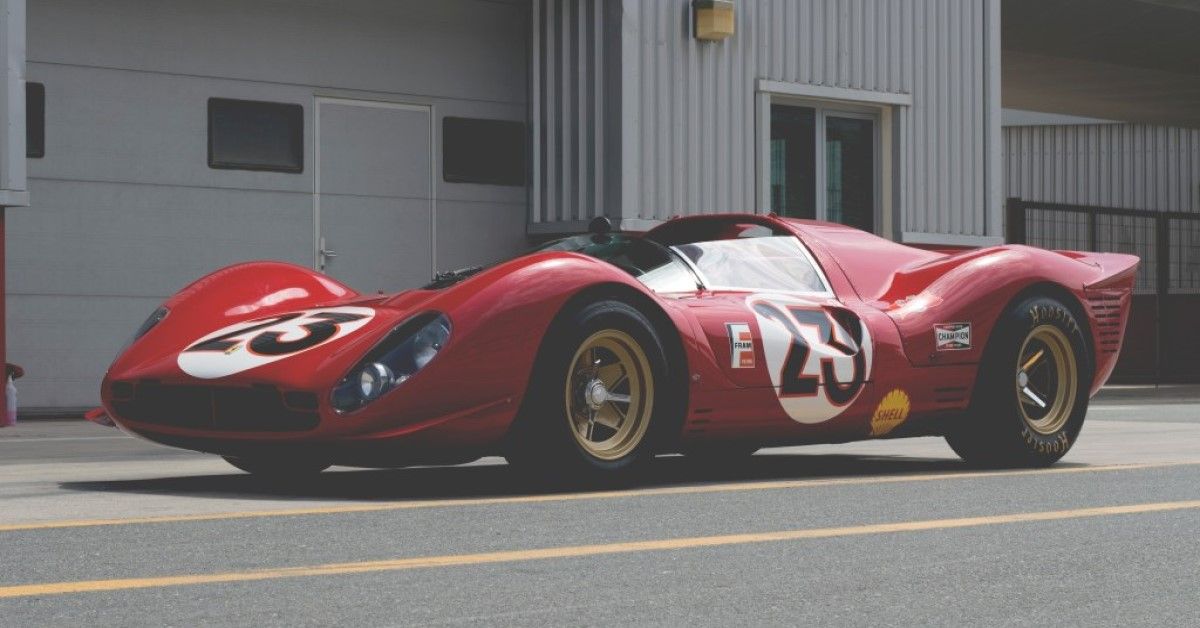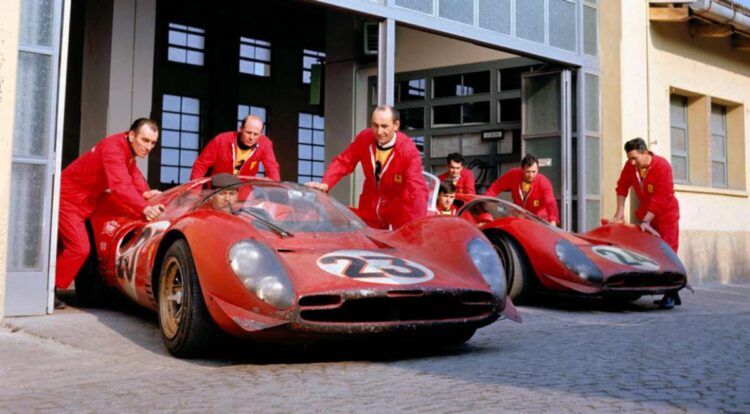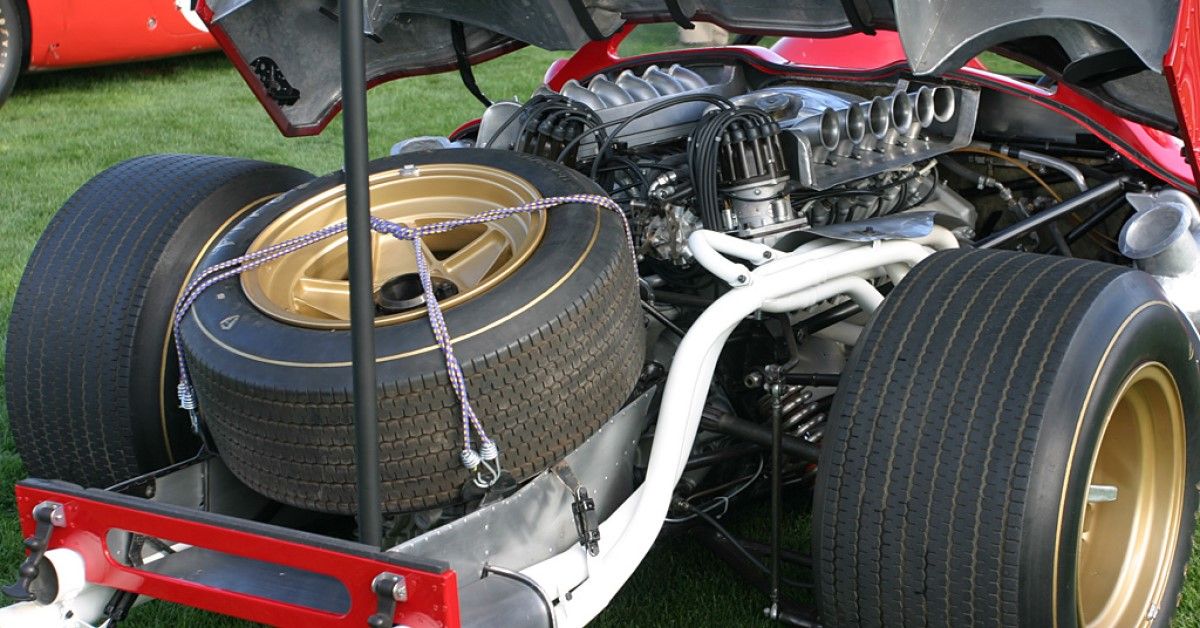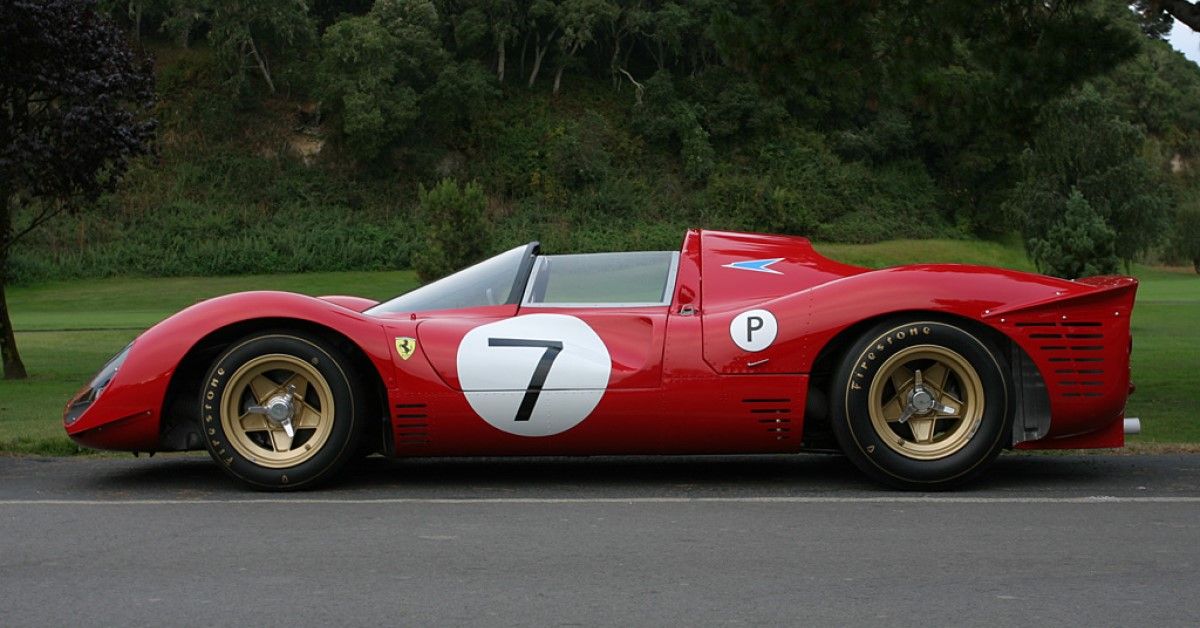Ferrari and Ford are best known for the famous battle on the racetracks. The most evident and iconic being 1966 Le Mans 24 Hours, which Ford won quite dramatically. The 1-2-3 win by Ford is a comeback story like none other and was made possible because of the GT40s, that Mr. Henry Ford specifically built to take on Ferrari. They used specifically designed 330 P3s in the 1966 face-off, of which none made it past the 17-hr mark. But this setback for Ferrari was a slingshot that helped them create one of the most important cars in the Italian marque's history.
But the loss helped Ferrari learn from its mistakes and mold the P3s into something even more efficient and endurable. This was a tricky period for Ferrari as it was having a labor crunch at their plant and so resources and man-power were highly limited. But they managed to tweak the existing 330 P3 platforms to make the much improved 330 P4.
The Ferrari 330 P4 is a very special car that rose from the ashes of Ferrari's defeat against Ford in the 1966 Le Mans 24 Hours.
The Ferrari 330 P4(s) Are Born
Ferrari's iconic race car was born during difficult times in motorsports as well as problems at their factory. The 330 P4 was built using the already derived knowledge and expertise that they had utilized for the 330 P3s. And for this factor, both the P3 and P4 looked exactly the same. But changes and upgrades were all skin deep with the more versatile and endurance-ready 330 P4s getting notable mechanical updates.
Despite all the constraints that they had with resources and man-power Enzo Ferrari and chief engineer Mauro Forghieri surprised the crowd by building 4 Ferrari 330 P4s. Three of them were made from scratch with chassis numbers 0856, 0858, and 0860. The 4th was a modified P3 with chassis number 0946 and was also known as the 330 P3/4.
Roaring V12 And "Enduring" Performance
The Ferrari P4 carried over the drooling V12 from the P3 but Engine technician Franco Rocci was in charge of modifying it for heightened endurance and capabilities than its donor. He thus built the first Ferrari engine to pack 3-valves per cylinder and was the biggest long-block 4.0L V12 ever used in a Ferrari. It pumped out a hefty 450 hp @ 8,000 rpm and could do 0-60 mph in a staggering 5 seconds. Ferrari slapped on a home-built 5-Speed gearbox instead of the unreliable Tipo 593 ZF transmission that was used in the P3s.
The Ferrari 330 P4 had a top speed of 210 mph which was downright scary in the 1960s. But it was not all about stupid baseless speed as Ferrari had extensively engineered the chassis to hold on for that added bit and a lot more. The P4 had a shorter wheelbase with a wider track width to accommodate wider tires. This added to its handling characteristics and also came with 4 repositioned disc brakes that could cool quicker.
A Ferrari That Anyone Could Get Used To
The extensive chassis modifications coupled with independent front and rear wishbone suspension layout made this mental Ferrari quite easy to drive. In fact, it was quoted as one of the easiest cars to drive on the racetracks as it was a very direct machine. It did everything according to the inputs given without any hiccup or confusion.
The wider stance and thicker tires help improve its handling drastically which in turn also helped imbibe confidence for the driver. Endurance fame, Chirs Amon, had joined Ferrari as a works driver for the 1967 season of Daytona 24. He had also raced in the Ford GT40s.
He had quoted, "The P4 was a very pleasant car to drive, as it was a great deal more nimble than the Fords I was used to. Although it lacked the ultimate top-end pace of the 7-liter Ford, it gave you the feeling that you could drive it to the maximum for the whole race, which really wasn’t the case for the Fords, especially the brakes …"
It Was All About The Curves
Italians have always been known for their dramatic approach to anything and everything. And Ferrari has showcased it quite beautifully with the 330 P4. This all-out racecar has been given ample importance in terms of its design language. It is low, wide, and all about the curves. Hands down, one of the most beautiful looking race-cars to take part in 24Hr Le Mans.
It packed cool looking cast magnesium Campagnolo wheels that were quite light yet durable for the endurance runs it was made for. Those fate Firestone tires not only looked cool but could also withstand speeds of more than 124 mph (200 kph) for hours.
Only A Single Ferrari 330 P4 Remains In Its Original Form
Just 3 of the 4 iterations of the Ferrari 330 P4 remain, or that is what Ferrari claims.
Chassis 0846: This was the P4 which was built on an existing P3 and is also filled with controversy. Ferrari claimed it to no longer exist but later on it was discovered that a replica P4 actually had 80% of the original parts from the modified P3 chassis. So now it stands as "in existence" but not completely though.
Chassis 0856: This was also converted into a spyder for the '67 Brands Hatch 500 race. It is currently owned by Canadian Businessman Lawrence Stroll and is the sole one that remains in its original state! This car was covered in a beautiful video by Petrolicious.
Chassis 0858: This and the last P4s were converted into Spyders for the 1967 brands Hatch race. It now is in the hands of RM Auction's Maranello and has been restored by David Piper to its Barchetta configuration. It awaits the next owner to take up the responsibility.
Chassis 0860: The last of this pack is owned by a French national which has been converted back into a Spyder body. it remains as his family heirloom.
Sources: Sportscardigest.com, Carbuzz.com, Nocturnalbandit.com, Supercars.net, Autoblog.com






